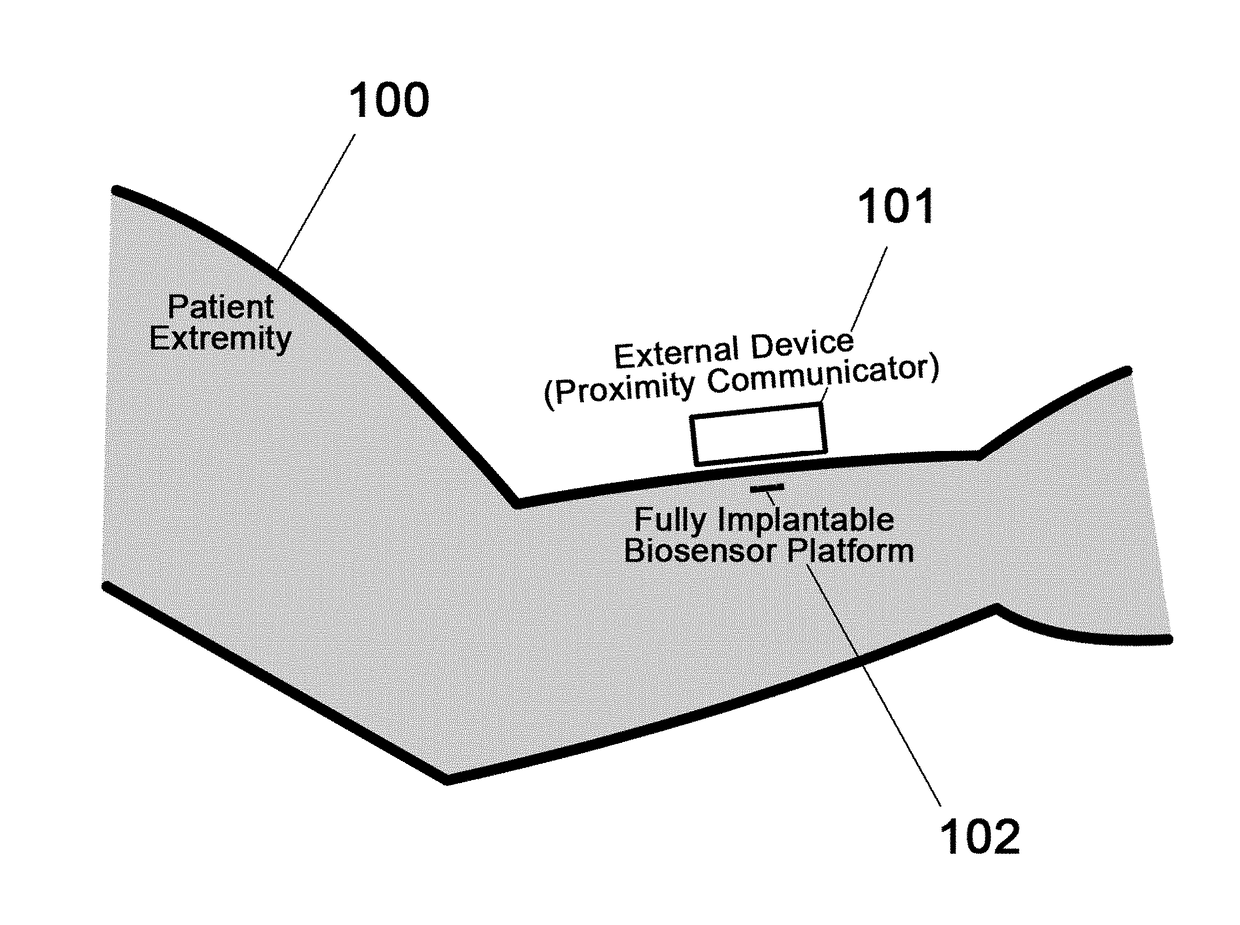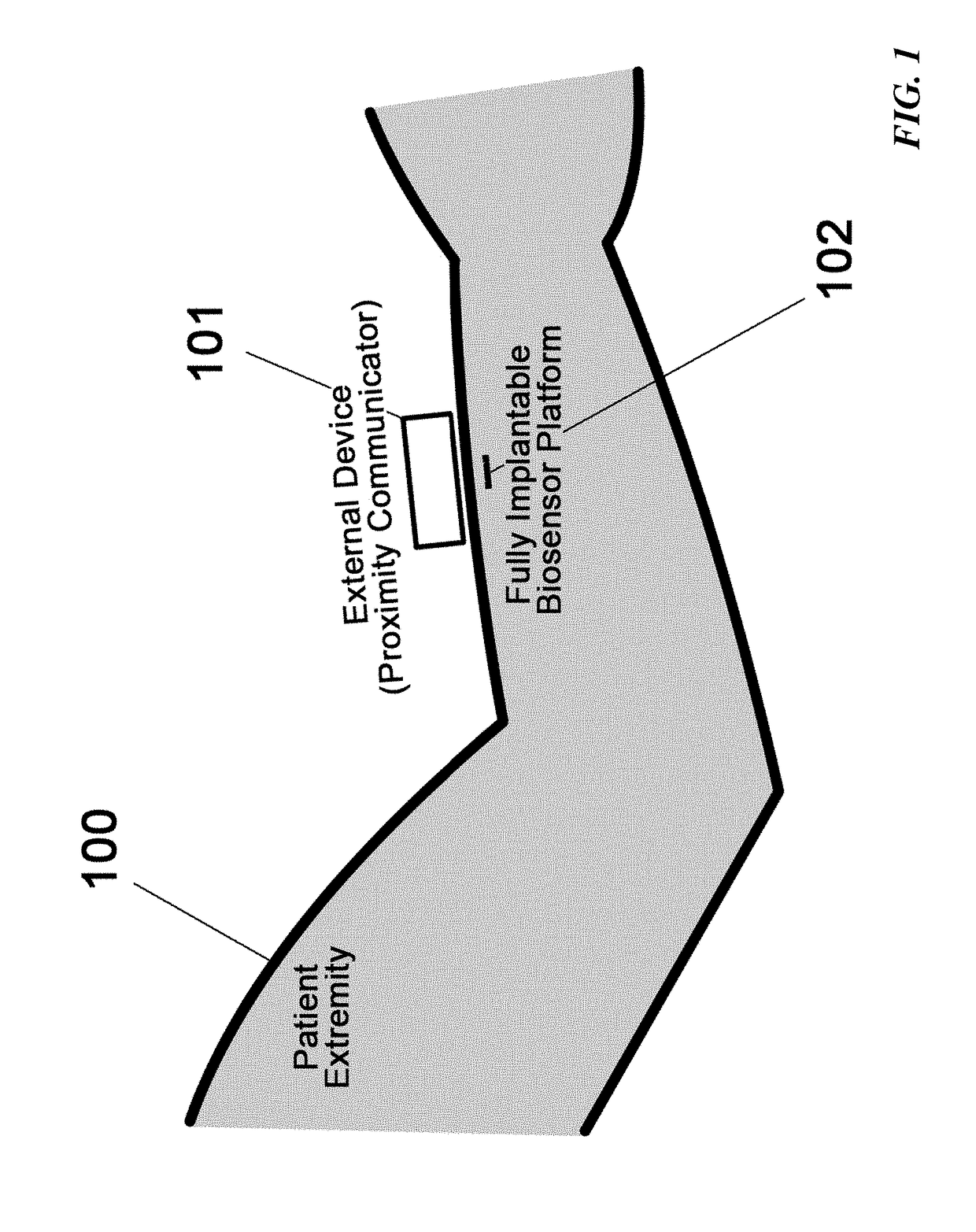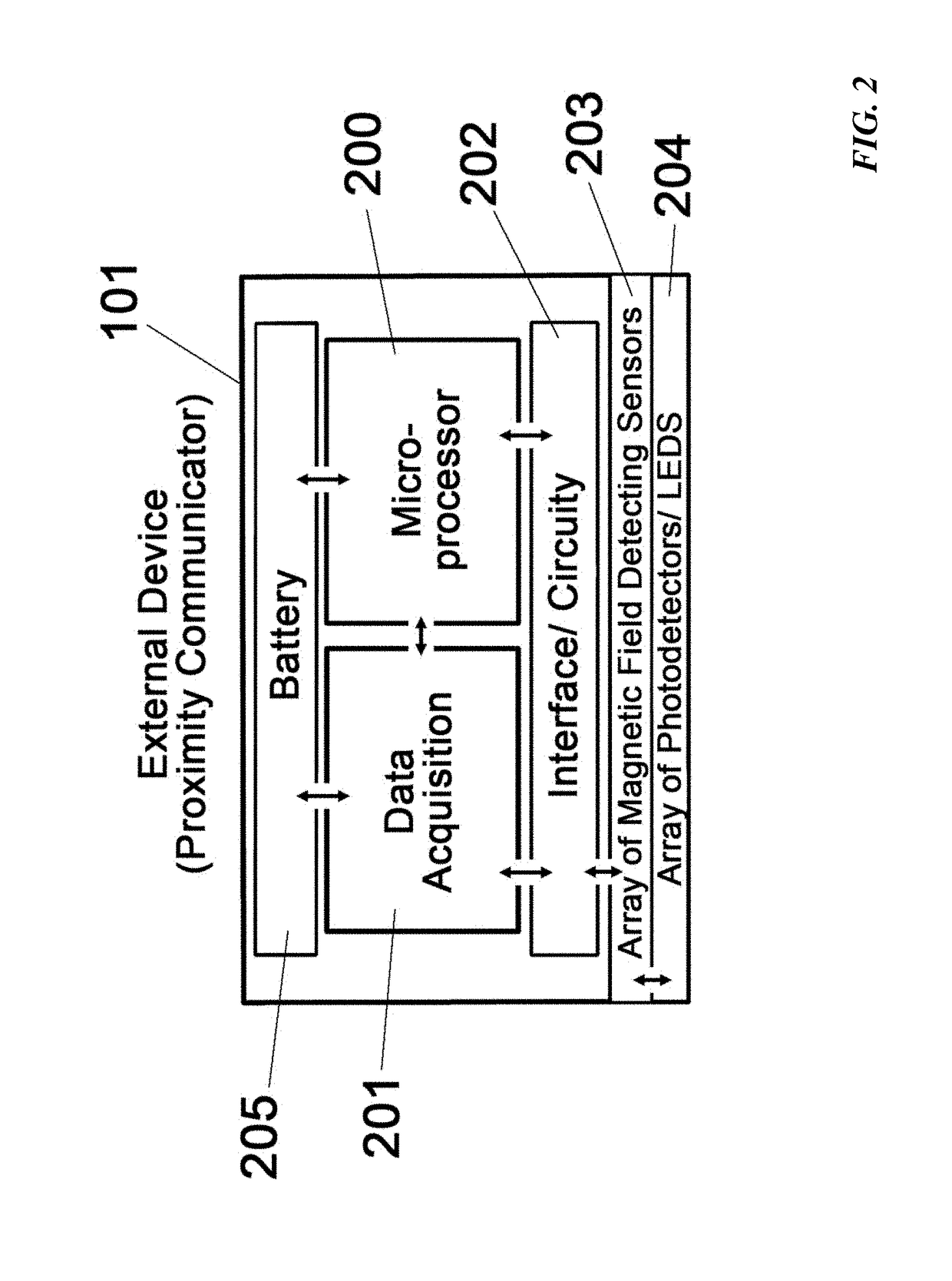Spatial Detection and Alignment of an Implantable Biosensing Platform
a biosensing platform and implantable technology, applied in the field of implantable biosensing platforms, can solve the problems of adding substantial design complexity, skin tissue makes it difficult to identify their precise location, etc., and achieves the effect of minimizing energy usage and minimizing energy usag
- Summary
- Abstract
- Description
- Claims
- Application Information
AI Technical Summary
Benefits of technology
Problems solved by technology
Method used
Image
Examples
second embodiment
[0040]Additional circuitry 202 such as an embedded processing unit 200 or circuitry to connect to an external computer may be implemented into the proximity communicator. Software or computer algorithms are then used to store and analyze the electrical signals of the magnetic field detecting sensors. In one embodiment, the magnetic field detecting sensors produce a digital signal and an extensive array of such sensors covering a ROI can be used to represent the spatial location of the fully implantable biosensor. In a second embodiment, the analog output voltage from each hall-effect sensor over a specific surface area can be used to map the location of any magnetic material under the skin. In this embodiment, the x-y position can be determined by the array of magnetic field detecting sensors and the z-position can be determined by the analog signal strength (e.g. output voltage). Moreover, magnetic field detecting sensors can detect the orientation and rotational (φ) location of a ...
example b
[0046 utilizes magnetic interacting / polarizing materials and devices (i.e. coils) within the implanted biosensor to alter the magnetic field pattern produced by a permanent (FIG. 9a) or oscillating (FIG. 9b) magnetic field generators situated within the external device. Such magnetic field alteration is detected by the array of magnetic field detecting sensors described above and used to assess the spatial (x, y), depth (z) and rotational (φ) position of the miniaturized implant within a highly scattering tissue.
[0047]Two exemplary devices and methods for the spatial localization of the implanted biosensor using magnetic interacting / polarizing materials and devices are shown in FIG. 9. Here the implant is outfitted with magnetically interacting / polarizable materials and devices 930 (i.e. coils 901 and complex 2D and 3D architectures with or without cores 902 of magnetic polarizable substances, like spin-glass). Subcategories of magnetically polarizable material include traditional m...
example c
[0049 describes another exemplary device and method for the spatial localization of the implant without the use of permanent magnets that can be incompatible with MRI. This approach negates completely the need for the array of magnetic field detecting sensors 203 and relies solely on the array of photodetector (PD) and LEDs 204 of the external device (proximity communicator) to map the emission from the two on-board LEDs or lasers (502 and 503) within the implantable biosensor 102 (FIG. 11). The two on-board light sources are oriented at 90° with each other in order to provide differential PD response upon φ rotation (although their relative orientation can greatly vary). FIG. 11 illustrates three exemplary PD line responses for φ of 0°, 45° and 90°. Since the front on-board light source 502 lines up with PD line #1 and the back on-board light source 503 lines up with PD line #2, different response patterns will be obtained depending on the specific rotation of the implant. These pa...
PUM
 Login to View More
Login to View More Abstract
Description
Claims
Application Information
 Login to View More
Login to View More - R&D
- Intellectual Property
- Life Sciences
- Materials
- Tech Scout
- Unparalleled Data Quality
- Higher Quality Content
- 60% Fewer Hallucinations
Browse by: Latest US Patents, China's latest patents, Technical Efficacy Thesaurus, Application Domain, Technology Topic, Popular Technical Reports.
© 2025 PatSnap. All rights reserved.Legal|Privacy policy|Modern Slavery Act Transparency Statement|Sitemap|About US| Contact US: help@patsnap.com



